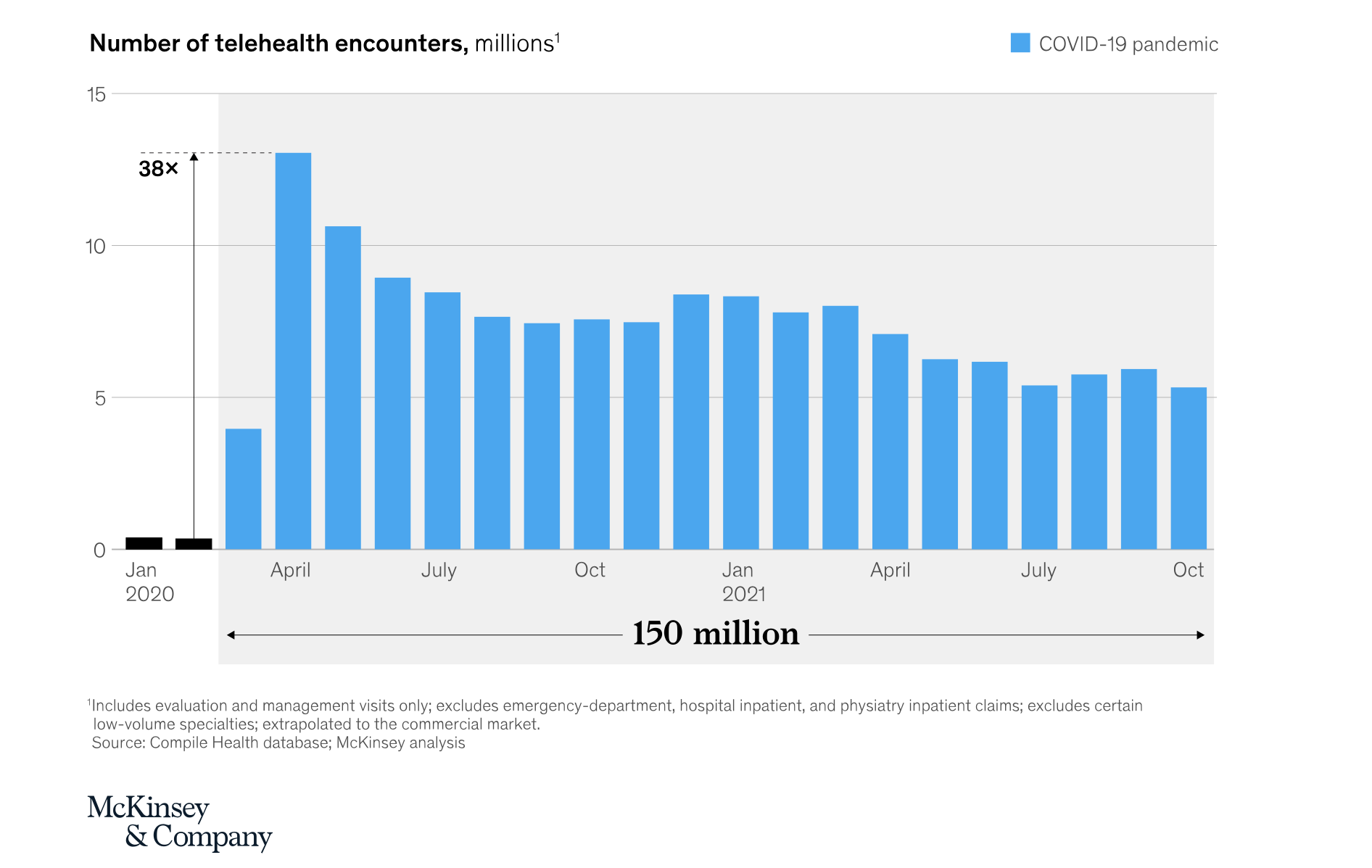In recent years, the term "telemedicine" has found its way into everyday healthcare discourse, offering a new promise for improved patient outcomes and reimagining our approach to medical consultations. In fact, 76% of US hospital systems used some form of telemedicine.
But, what is telemedicine, really? And how is the burgeoning influence of technologies such as generative AI and machine learning shaping the future of telemedicine? Let's take a look at this transformative facet of healthcare.
What is Telemedicine?
In simple terms, telemedicine refers to the provision of healthcare services remotely, using technology to bridge the gap between patients and providers. It involves consultations, diagnostics, and sometimes even treatments facilitated through digital means—enabling patients to access medical expertise from the comfort of their homes.
The Evolution of Virtual Care
While the concept of telemedicine isn't novel, the last decade has witnessed a rapid acceleration in its adoption. This shift can be attributed to various factors.
Technological Advancements
As internet speeds have increased and technologies have become more sophisticated, so too has the capability to transmit high-quality video calls, share complex medical data in real time, and implement machine learning tools in diagnostic processes.
Changing Patient Expectations
The modern patient seeks convenience. The ability to consult a doctor without the need to commute, wait, or deal with administrative red tape has changed the patient-provider relationship dynamic.
Pandemic-Induced Necessity
The COVID-19 pandemic underscored the need for telemedicine as hospitals and clinics became overwhelmed, and staying home became the new normal. In fact, virtual health visits grew by more than 3,000% early on in the COVID-19 pandemic, with 150 million telehealth claims in less than two years.
Generative AI, Machine Learning, and the New Age of Telemedicine
The real game-changer in the future of telemedicine might be the harnessing of advanced technologies.
Generative AI in Diagnostics
Generative AI models, which can generate new data points from existing data sets, can be harnessed to predict patient health outcomes or even suggest potential treatments. These models take existing medical data and offer insights that can be revolutionary in patient care.
Machine Learning in Patient Management
Machine learning can analyze patterns in patient data, predict potential health risks, and assist healthcare providers in making informed decisions. It can also help in automating administrative tasks, allowing practitioners to focus more on patient care.
Omnichannel Engagement: The Holistic Approach to Virtual Care
The future of telemedicine isn't just about video calls. It's about omnichannel engagement. This means that patients have multiple touchpoints with healthcare providers:
Messaging Platforms: Real-time chat support for immediate queries.
Virtual Health Records: Access to health data anywhere, anytime.
Wearable Integrations: Real-time health monitoring through smart devices.
Omnichannel engagement ensures continuity in care, even if the patient moves from one medium to another. It encapsulates the whole spectrum of patient engagement, from initial consultation to post-treatment follow-up, all under the broad umbrella of telemedicine.
A Glimpse Into the Future
The future of telemedicine promises a world where healthcare is more accessible, efficient, and personalized. Imagine a scenario where a patient in a remote location can not only consult a world-class specialist through a video call but also receive real-time monitoring through wearable devices and AI-driven diagnostic feedback.
Moreover, as telemedicine platforms become more integrated with advanced AI and machine learning tools, we can expect even more improved patient outcomes. With a tailored and informed approach to each individual's health, telemedicine stands as a beacon for the future of patient-centered care.
Final Thoughts
As we move forward, telemedicine will undoubtedly play an increasingly pivotal role in shaping global healthcare landscapes. By intertwining advanced technologies with the core tenets of patient care, we're on the brink of a healthcare revolution that promises a brighter, more accessible future for all.





